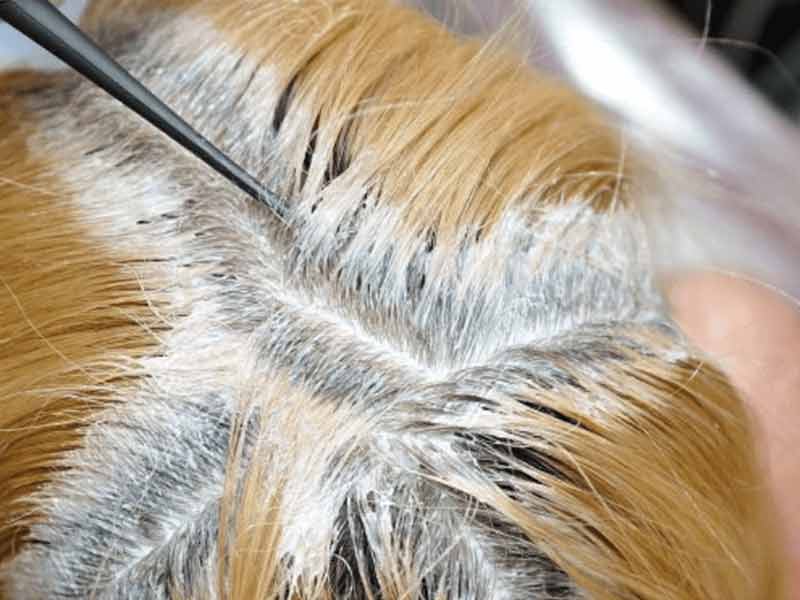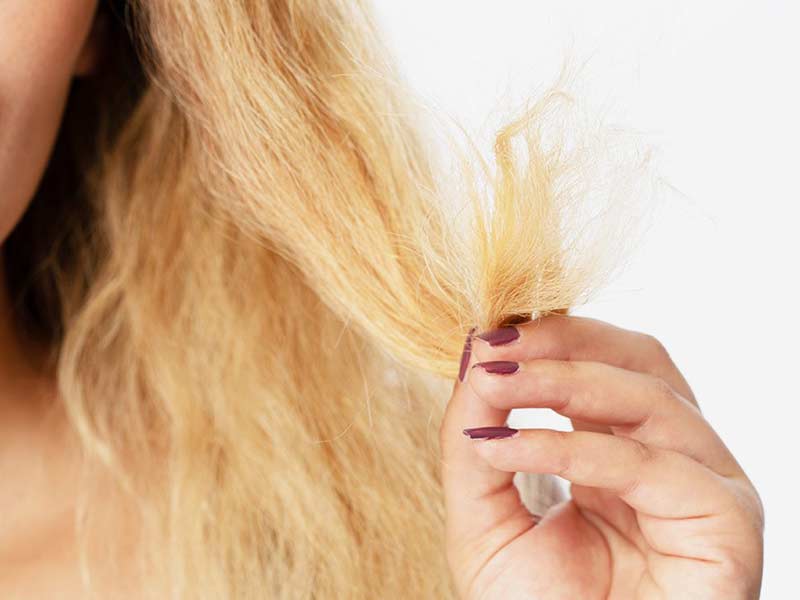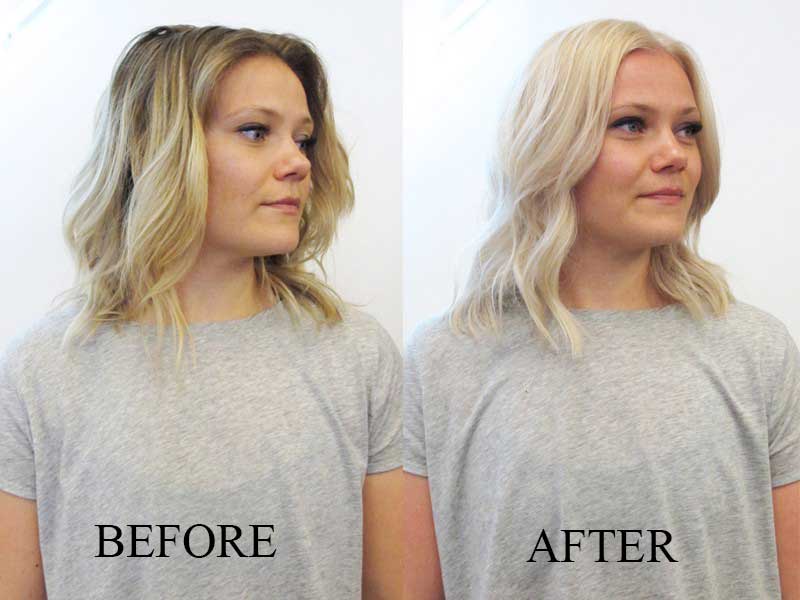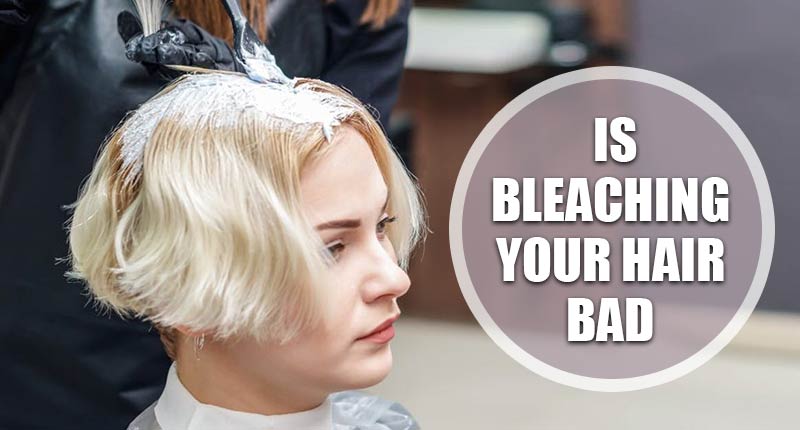Changing your hair color is now simpler than ever before. Every season, you’ll see celebrities changing their hair color and style dramatically. Every few months, a new hair color pattern emerges, ranging from rainbow to mermaid hair color as well as various balayage techniques. Hair bleach is a key factor in producing these bright colors. It is difficult to obtain your favorite color for your hair without bleach. When it comes to bleaching, there are normally several concerns, one of which is: is bleaching your hair bad?
Table of Contents
What Are the Ingredients of Hair Bleach?
Knowing what hair bleach consists of may help you to know if bleaching your hair is bad or not. Hair bleach works by removing the dye from the hair by a chemical reaction. The most effective bleaching agents are hydrogen peroxide and ammonia.

They are breakable and slow to lighten the hair, that is why they are combined in a mixture. Bleaching your hair without these or equivalent agents is difficult. A bleaching or lightening substance that appears to be free of peroxide or ammonia may tend to be a healthier alternative.
However, be careful that a particular agent is likely to be used, and maybe just as harmful or even more so. The only thing you can do is to figure out what you want to get out of the bleaching procedure.
How does hair bleach work on your hair?
So, we’ve said that bleach normally contains a combination of peroxide and ammonia, and you may be curious what those two ingredients do. Bleaching the hair necessitates the occurrence of a chemical reaction known as oxidation.
The pigment in your hair is dissolved as a result of this process. The procedure begins with the use of an alkaline agent to open the cuticles. This is crucial because it helps the bleaching agent to penetrate the hair completely.
The bleaching agents would then continue to oxidize, causing the natural melanin in your hair to disappear.
You will note that this phase of oxidation releases heat energy. You can assist the process by using either a wet shower cap or use a heating cap.
Read more:
- How To Hydrate Hair After Bleaching? 8 Easy Tips To Follow
- Bleaching Knots On Full Lace Wig? It’s Easy If You Do It Smart
- Bleaching Knots On Lace Closure: Why & How?
- What Is The Best Hair Bleach To Buy? Top 6 Best Rated Items!
Does bleaching your hair damage it forever?
Is bleaching your hair bad? And how bad is bleaching hair? Let’s look at the short-term and long-term consequences of bleaching to get a detailed response to this issue.

Bleaching’s short-term consequences
Bleaching the hair removes the fatty acids and natural melanin that adjust its color, as well as opening up the hair cuticles and making it more porous. Hair that is more brittle will allow moisture to escape more quickly, making it more vulnerable to breakage. A cup of water can be used to test the porosity of your scalp. Put a strand of clean hair in the wash. If that strand will float more, it is more porous. Low porosity will go down to the bottom, while normal porosity should hang about halfway.
Your hair may feel stiff, but you may note that it has gained thickness. The hair swells as the cuticles open during the first steps of the bleaching procedure, and you can see a “bird’s nest” appearance. This is because bleach can leave the hair stiff and brittle, causing fraying and tangling. You should use a decent deep conditioner that closes your cuticles and restores moisture to your hair right after bleaching. You may get some redness on your forehead, which will disappear soon.
Bleaching’s long-term consequences
All of the disadvantages can seem daunting and frightening, but don’t be afraid! There is positive news to tell! Bleaching has a very low chance of affecting new hair development, there is normally no lasting damage in the long term.

However, to keep your hair safe while bleaching and growing it out, you’ll need to maintain it on a regular basis. To breathe new life into your hair, find a decent hair care regimen that fits your hairstyle. When washing and drying your hair, you must be gentle. Scrubbing the hair vigorously and towel drying it in a harsh manner will damage it and promote further tangling and breakage. You should restrict your exposure to sunshine, UV rays (no tanning), and heat styling since these will inflict further harm and have a negative effect on your color.
Do you want to bleach once more?
If you try to bleach your hair, you’ll face a new range of difficulties. The more hair is washed and bleached, the less color retention is achieved.
This would allow the hair color to fade faster, making it more difficult to obtain the desired color effects. Color treatments are even more difficult to achieve on highly processed fur. If you are a swimmer or spend a lot of time in a pool with chlorine, you should proceed with caution while bleaching your hair. Chlorine will dry out your hair and cause more damage. It may also cause hair dyes to fade and blonde hair to turn green.
Jump to:
- How To Pluck A Human Hair Wig – Here’s What Hair Gurus Have Shared
- 6 Smart Ways To Fix Orange Hair Hue Effectively
- Fake Hair For Men – Will You Ever Need It?
- How To Dye Hair Grey From Dark Brown: 6 Smart Ways!
Tips for bleaching hair
There are some measures to reduce the damage caused by bleaching hair. Check it out below:
Choose proper volume developer for your hair
The developer is an important part of bleaching hair.
A 10 volume developer won’t lighten your hair and is only for color deposit.

A 20 volume developer works on your needs when you have light brown to blonde hair.
You can bump it with a developing 30 volume if you have brown to dark brown hair. And if you don’t know how much you need or find it difficult to choose which developer you need, a 30 volume is usually your best choice.
If your hair is strong and healthy, you can use a 40 volume developer and I recommend that for hair that has not previously been treated.
Use toner
During the lifting process, your hair usually fades to a brassy orange or purple, depending on your natural hair and starting point. Toner will help remove the excess pigments but do not try to use color as a toner. A blue toner cancels green, while a violet toner mutes yellow tones.
Conclusion
So, is bleaching your hair bad? The bleaching process is like a coin with two sides, having both pros and cons. The thing is, bleaching may seem to be a frightening procedure, but it doesn’t have to be. Doing some research and sticking to the rules will help you bleach effectively and achieve beautiful colors.


